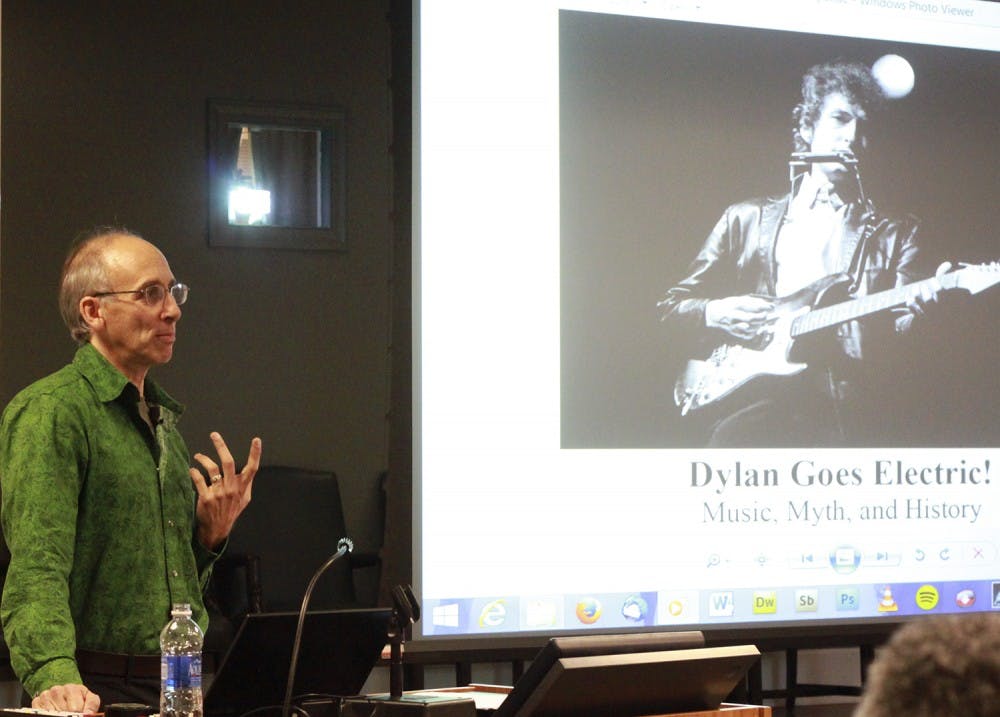Woody Guthrie, Jack Elliott and Pete Seeger became his heroes, as was evident on his first album. He was also influenced by Carl Perkins and Elvis Presley’s early work.
Dylan also became associated with protest songs, which led to him being a symbol of the civil rights movement. He even performed at the March on Washington with Joan Baez in 1963.
Wald said Dylan’s album, Bringing It All Back Home, was his answer to the British Invasion created by groups like the Beatles and the Rolling Stones.
While his electric sound did change the way the public and his folk followers viewed him, his influences can be traced back to his very first album, Wald said, referencing the song “Mixed-Up Confusion.”
“If Dylan sounded like that in 1962, then why the hell were people surprised when he went electric in 1965?” Wald asked the crowd.
John Treworgy said he grew up in New England near Club 47, where artists like Baez and Dylan played. He had friends who knew Dylan and who attended the Newport festival.
While some of his friends hated Dylan’s new sound — he loved it.
“For a long time, people didn’t appreciate him,” Treworgy said. “They appreciated his poetry, but his voice was not well accepted.”
Wald warned people about the implications of placing musicians into a specific category. He said Dylan is more than his placement into the folk-rock category.
“He was making a difficult artistic choice and sticking by it,” Wald said. “It’s important because he took the folk scene with him.”
Ave Maria Dimos, from Brazil, said she learned a lot from the lecture and was very impressed with the speaker.
“He was reinterpreting music,” she said.
To get the day's news and headlines in your inbox each morning, sign up for our email newsletters.
Dylan’s new sound was controversial in 1965, but easily became more accepted as the months went by.
“He stuck to his guns, and history proved him right,” Wald said.
@MariaMullis2017
arts@dailytarheel.com



